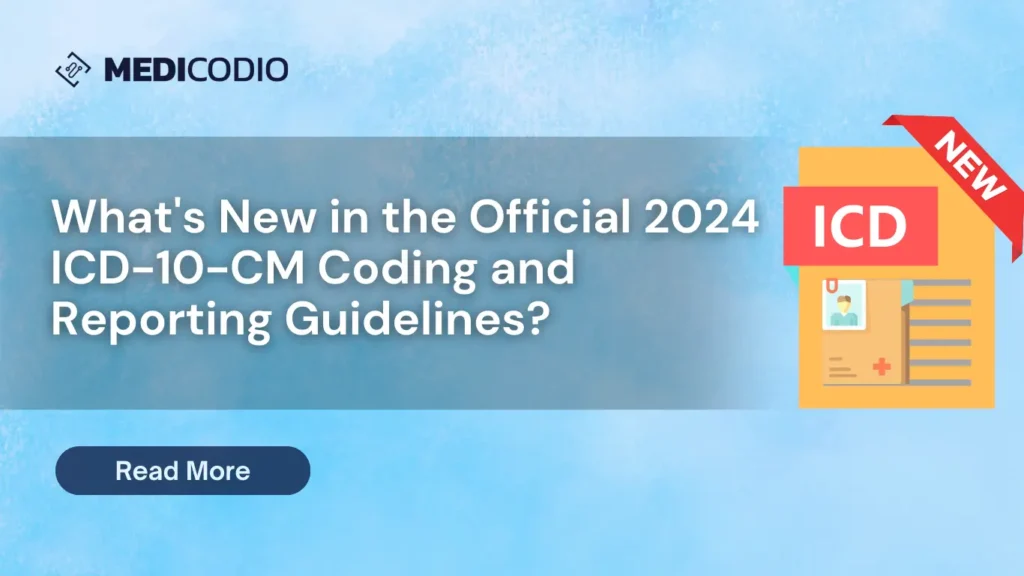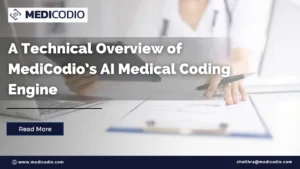In the medical coding and billing field, staying current is not an option; it’s a necessity. With medical coding (ICD-10-CM) guidelines in constant flux, staying current has never been more crucial.
Did you know that the Centers for Medicare and Medicaid Services (CMS) and the National Center for Health Statistics (NCHS) have recently updated the guidelines for ICD-10-CM coding and reporting? These guidelines play a crucial role in ensuring accurate reporting and billing in healthcare settings. Understanding these changes is vital for healthcare professionals to maintain high standards of coding integrity and ensure optimal patient care. FYI, these guidelines have been vetted and approved by the four organizations that make up the Cooperating Parties for the ICD-10-CM: the American Hospital Association (AHA), the American Health Information Management Association (AHIMA), CMS, and NCHS.
Health Insurance Portability and Accountability Act (HIPAA) has made it mandatory to adhere to these guidelines when assigning ICD-10-CM diagnosis codes.
Let’s delve into the key changes and how they impact coding practices.
These guidelines are primarily created to help healthcare providers and coders identify diagnoses that should be reported. The importance of thorough and consistent documentation in the medical record cannot be overstated, as accurate coding relies on it. The entire medical record should be reviewed to determine the reason for the encounter and the conditions treated.
The term “encounter” is used for all settings, including hospital admissions. Throughout these guidelines, the term “provider” refers to physicians or any qualified healthcare practitioner who is legally responsible for diagnosing the patient. Only the guidelines approved by the Cooperating Parties are considered official.

The guidelines are divided into sections. Section I covers the structure and conventions of the classification, general guidelines applicable to the entire classification, and chapter-specific guidelines corresponding to the chapters in the classification. Section II provides guidelines for selecting the principal diagnosis in non-outpatient settings. Section III offers guidelines for reporting additional diagnoses in non-outpatient settings. Section IV pertains to outpatient coding and reporting. It is important to review all sections of the guidelines to fully understand the rules and instructions for accurate coding.
The updates to the ICD-10-CM coding consist of 395 new codes and 25 deletions spread across 17 different chapters. These updates also include changes to the Index and other revisions.
Below is a distribution of the new codes and a summary of selected conditions:
| Chapter | Description | New Codes | Notes |
| 1 | INFECTIOUS AND PARASITIC DISEASES (A00-B99), U07.1, U09.9 | 2 | Codes for Acinetobacter baumannii sepsis or diseases classified elsewhere. A41.54 – Sepsis due to Acinetobacter baumannii B96.83 – Acinetobacter baumannii as the cause of diseases classified elsewhere |
| 2 | NEOPLASMS (C00-D49) | 13 | 10 codes for desmoid tumors. (D48.110-D48.119) D13.91 – Familial adenomatous polyposis D13.99 – Benign neoplasm of ill-defined sites within the digestive system D48.19 – Other specified neoplasm of uncertain behavior of connective and other soft tissue |
| 3 | DISEASES OF BLOOD AND BLOOD-FORMING ORGANS AND DISORDERS INVOLVING IMMUNE MECHANISM (D50-D89) | 8 | Codes for Sickle-cell conditions with dactylitis. D57.04 Hb-SS disease with dactylitis D57.214 Sickle-cell/Hb-C disease with dactylitis D57.414 Sickle-cell thalassemia, unspecified, with dactylitis D57.434 Sickle-cell thalassemia beta zero with dactylitis D57.454 Sickle-cell thalassemia beta plus with dactylitis D57.814 Other sickle-cell disorders with dactylitis D61.02 Shwachman-Diamond syndrome D89.84 IgG4-related disease |
| 4 | ENDOCRINE, NUTRITIONAL, AND METABOLIC DISEASES (E00-E89) | 18 | Codes for insulin resistance and hypoparathyroidism. |
| 5 | Mental, Behavioral and Neurodevelopmental disorders (F01 – F99) | ||
| 6 | DISEASES OF NERVOUS SYSTEM | 24 | Codes for Lafora Body Disease, chronic migraine with aura, and Parkinson’s disease with/without dyskinesia, with/without fluctuations. |
| 7 | DISEASES OF EYE AND ADNEXA | 34 | Codes for sickle-cell retinopathy, muscle entrapment by site, and foreign body sensations. |
| 9 | DISEASES OF CIRCULATORY SYSTEM | 10 | Codes related to tachycardia, angina, and microvascular dysfunction. |
| 10 | DISEASES OF RESPIRATORY SYSTEM | 7 | Codes for pneumonia due to Acinetobacter baumannii and lung allograft dysfunction. |
| 11 | DISEASES OF DIGESTIVE SYSTEM | 17 | New codes include acute appendicitis with generalized peritonitis, small intestinal bacterial or fungal overgrowth, and short bowel syndrome. |
| 13 | DISEASES OF MUSCULOSKELETAL SYSTEM | 36 | Specific codes for osteoporosis of pelvis with pathological fracture. |
| 14 | DISEASES OF GENITOURINARY SYSTEM | 15 | Codes for recurrent and persistent immunoglobulin A nephropathy (IgAN). |
| 15 | PREGNANCY, CHILDBIRTH, AND PUERPERIUM | 6 | Codes for intrahepatic cholestasis of pregnancy (ICP). |
| 17 | CONGENITAL MALFORMATIONS | 22 | Specific types of craniosynostosis. |
| 18 | SYMPTOMS, SIGNS, AND ABNORMAL CLINICAL AND LABORATORY FINDINGS | 18 | Codes for foreign body sensation and breast density. |
| 19 | INJURY, POISONING | 12 | Codes for the toxic effect of gadolinium. |
| 20 | EXTERNAL CAUSES OF MORBIDITY | 123 | Codes for objects entering through a natural orifice. |
| 21 | FACTORS INFLUENCING HEALTH STATUS AND CONTACT WITH HEALTH SERVICES | 30 | Includes codes related to Social Determinants of Health (SDOH) and a new subcategory for “Caregiver’s noncompliance with patient’s medical treatment and regimen”. |
These updates include a total of 395 new codes and 25 deletions across 17 chapters of the ICD-10-CM.
Are you struggling to stay updated with ever-changing guidelines of medical coding? Don’t worry, MediCodio has your back. By implementing MediCodio’s AI medical coding tool, medical coders need not worry about staying updated, as CODIO constantly gets updated with the latest coding guidelines and suggests appropriate codes. This ensures accuracy, efficiency, and compliance with coding standards, ultimately leading to improved revenue cycle management and patient care. Say goodbye to the complexities of medical coding and embrace a more streamlined and effective approach with MediCodio.
AI-powered medical coding tools like MediCodio employ a two-pronged approach to stay up to date with the ever-changing landscape of medical coding:
-
- Automatic Updates: These tools are designed to integrate with official coding databases and registries. Whenever there are updates to ICD-10 codes, CPT codes, or relevant guidelines, the AI system automatically downloads and incorporates these changes. This ensures your coding tool is always working with the latest information.
-
- Machine Learning: Many AI coding tools utilize machine learning algorithms. These algorithms are constantly analyzing vast amounts of medical coding data, including past updates and human coder feedback. This ongoing analysis allows the tool to identify patterns and adapt to new coding practices and terminology as they emerge.
By combining automatic updates with machine learning, AI coding tools like MediCodio can stay ahead of the curve, ensuring you have access to the most accurate and up-to-date coding information available.
If you want to understand more about CODIO, please schedule a free demo with us. Our team will be delighted to walk you through the ins and outs of our AI medical coding software.
Give it a go: Try Now!





